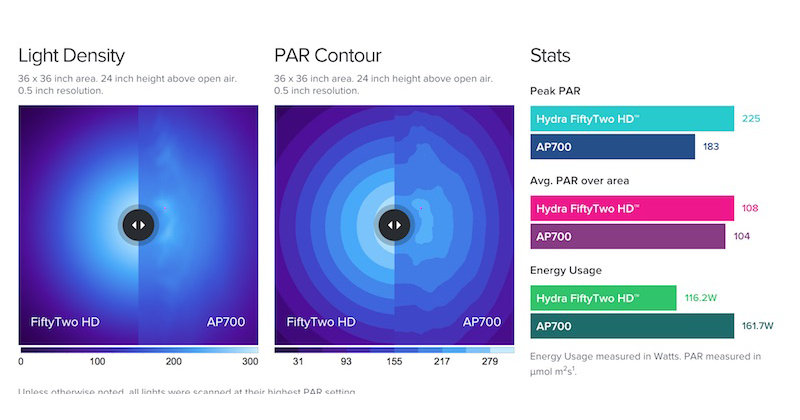If you’ve got a modern controllable LED reef aquarium light on the market, you can’t market it to savvy reefers without at least divulging some of the specific levels of light intensity. As well-informed reefers, we want to know the peak photosynthetically active radiation (PAR) at a set distance, as well as the the working area of the aquarium where we can expect PAR levels to be around 200 umols or more.
Getting the peak PAR value of any light is pretty straightforward, and reefers have being doing this by hand for years now. However, mapping out the light field over a given area, with hundreds of light measurement points can be extremely time consuming, and prone to errors. Thankfully, a new page on Light Science by Aqua Illumination reveals their sophisticated approach to measuring light field for any kind of light.
Where many LED light manufacturers are happy to throw some LEDs on a heatsink, attach a driver and put in a box, you can tell that the Aqua Illumination offices are staffed by some really nerdy engineers. Building cloud control right into their Prime and Hydra HyperDrive LED lights, designing a massive array of Prime LED lights for their own show tanks is just the tip of the iceberg. Now AI has gone and built a PAR-testing robot that includes more code and engineering than most companies’ entire line of LED lights.

The PAR testing robot automatically measures light points in half inch increments over a 36 by 36 inch area. This meticulous approach to measuring PAR gives an incredibly detailed output of light field at any desired distance from the light, and we have the first results for a number of the reefin hobby’s best LED lights.
Interestingly, from Aqua Illumination’s point of view the lights worth testing so far only include AI Primes and Hydras, Ecotech Radions, MaxSpect Razor, and Kessil’s spotlights and AP 700. The number of LED lights that are PAR-BOT worthy will surely grow in the future, but probably not by much.

Not surprising then that the only light that can hang with the AI Prime and Hydra HD LEDs are the Radion XR15 and Radion XR30 respectively. But what we appreciate about the published, interactive PAR measurements from AI is how uniform the light field is for both Hydras and Radions, which is very different from the choppy light fields measured for all the other lights.
Keep in mind that other manufacturers may have optimized the optics of their LED lights for a 24 inch distance, or less, or any distance other than the 36 inch distance used in the test. But don’t take our word for it, check out the results in the Aqua Illumination Light Science page and it’ll be really interesting to see how many people can correlate the published light fields with the growth and health of corals in their own tanks.



